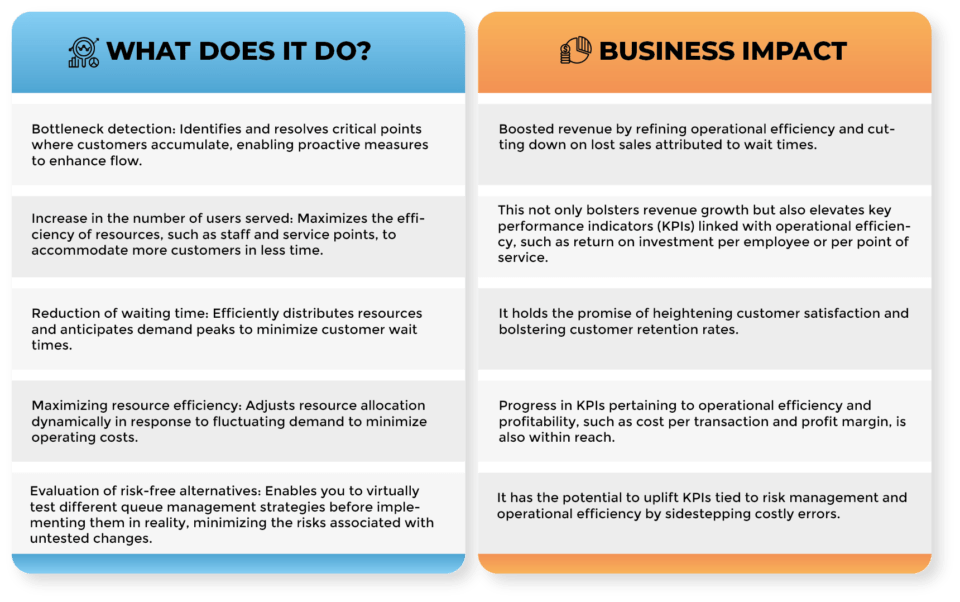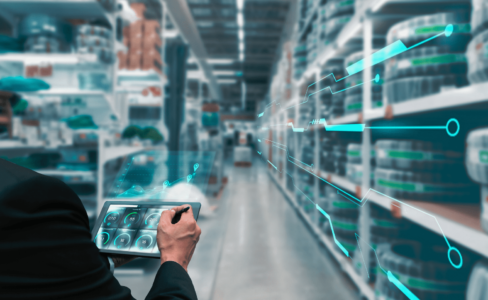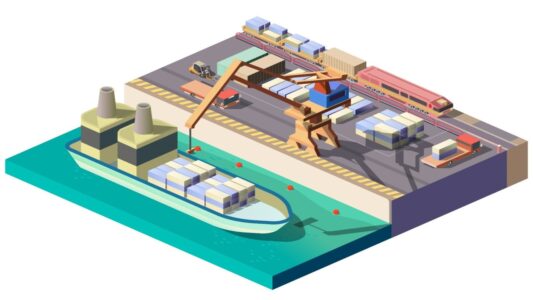According to the 2023 annual survey by Waitwhile, waiting in lines remains a significant aspect of the retail experience. Ninety percent of consumers report encountering queues multiple times a month, with 64% facing them several times a week. This prevalence poses a common obstacle in the purchasing journey.
The impact on customer conversion and retention cannot be overstated. Over 60% of customers abandon queues before completing their transactions, while waiting in line elicits negative emotions like impatience, boredom, and frustration. This not only affects the customer’s immediate experience but also influences their likelihood of returning and their word-of-mouth recommendations to potential customers.
Recognizing the role that artificial intelligence (AI) can play in addressing this challenge is essential. Innovative technologies, such as AI-based queue simulation systems, provide retailers with opportunities to optimize and streamline the waiting process. By doing so, they can reduce customer frustration, enhance operational efficiency, and boost both current and future sales.

What is queuing simulation?
Queue simulation is a technique used to model and understand the behavior of queuing systems. In the retail context, these systems encompass checkout lines, service access lines, or any scenario where customers must wait their turn.
What advantages does it offer?
Queue simulation and optimization are critical in retail, as they directly impact the current and future customer experience and operational efficiency.

How does it work?
Implementing these tools is a complex process that demands a meticulous and detailed approach. Therefore, below, we comprehensively outline what this process entails:
1. Model definition: Initially, the key components of the queuing system are identified, including the number of servers (e.g., cash registers), the customer arrival rate, and the distribution of service time.
2. Input data generation: Historical data is gathered or observations are conducted to comprehend the system’s behavior, such as the number of customers arriving at specific time intervals and the duration of their transactions.
3. Development of the simulation model: A computational model is constructed to represent the queuing system. This can be achieved using specialized simulation software such as Arena, Simul8, or AnyLogic, or by programming in languages such as Python or R.
4. Simulation Run: The model is executed using the input data generated in step 2 to simulate the behavior of the queuing system over time.
5. Results Analysis: Simulation outcomes are scrutinized to grasp system performance metrics, such as average wait times, server utilization, and other key performance indicators.
Combination of techniques:
The integration of AI techniques such as Discrete Event Simulation and mathematical optimization is crucial for effectively addressing this challenge.

How can I implement it in my company?
It is evident that implementing artificial intelligence and advanced analytics solutions for queue optimization can be a complex process. Therefore, the main solutions include establishing an internal department of data scientists and AI algorithm modeling, seeking already developed products and adapting them to your company, or developing a customized solution with a partner or supplier.
At Baobab Solutions, we understand the problem, the technologies, and we can guide you every step of the way. Our team of experts has extensive experience in developing and implementing technological solutions across various industries, including the retail sector. We are prepared to offer personalized solutions that cater to your specific needs and surpass your expectations.
Below, we present some notable examples of how these solutions are successfully implemented in the sector, providing tangible benefits for both companies and their customers:
- Store layout design optimization: You can determine the strategic placement of products and cash registers to minimize waiting times and maximize sales.
- Personnel management in physical stores: These models can also determine the optimal number of staff needed at different times of the day to minimize wait times at cash registers and enhance customer satisfaction.
- Promotional event planning: Before hosting a promotional event, such as a special sale or product launch, it is possible to simulate the expected increase in customer traffic and adjust the allocation of resources and staff to handle the additional demand and prevent long wait times.
- Optimization of customer flow at the entrance/exit: Stores can simulate different strategies to manage the flow of customers in and out of the store, such as positioning entry and exit doors, implementing one-way aisles, and deploying queue management systems.
- Inventory Management Optimization: In addition to optimizing checkout queues, simulation can also assist in improving inventory management by forecasting future demand and adjusting stock levels accordingly, thereby preventing situations where customers have to wait due to out-of-stock products.

The adoption of simulation and mathematical optimization techniques in the retail field represents a complex yet fundamental challenge. Artificial intelligence is the driving force behind this revolution, not only enhancing the customer experience, but also optimizing operational efficiency and increasing profitability.
Would you like to delve deeper into how these techniques can enhance your business? Visit https://baobabsoluciones.es/en/what-we-do/ to delve into this topic and uncover how we can aid you in implementing AI solutions within your company!



